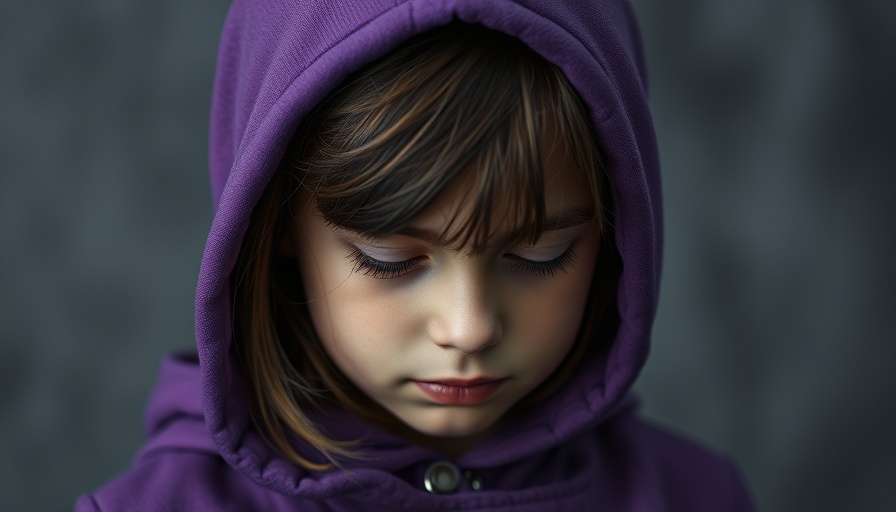
Understanding the Pain: The Reality of Grandfather Sexual Abuse
When it comes to the topic of child sexual abuse, particularly by grandfathers, many might assume it’s an isolated phenomenon. Yet, the harsh reality is that this type of abuse exists more frequently than society is willing to acknowledge. Victims often carry the burden of silence, feeling invalidated or silenced to protect family dynamics. This culture of secrecy around grandfather sexual abuse is a troubling legacy that needs to be addressed if we are to foster genuine understanding and healing.
The Nature of Child Sexual Abuse: A Hidden Epidemic
Child sexual abuse (CSA) is defined broadly, encompassing not just penetrative acts but also a range of coercive behaviors. These include unwanted touching, exposure to sexual acts or imagery, and any form of exploitation. According to statistics, one in five women and one in thirteen men reveal they were sexually abused as children. The devastating implications of these actions underscore that consent is nonexistent in cases involving minors, and it’s crucial to dismantle the myths that conflate abuse with consent.
Intrafamilial Abuse: A Complex Web of Secrecy
Intrafamilial child sexual abuse refers to instances of abuse occurring within a family, complicating the dynamics of both victim and perpetrator. In many families, addressing such issues leads to discomfort, blame, and secrecy instead of healing and acknowledgment. Research suggests that intrafamilial abuse makes up approximately 30% of all reported sexual abuse cases, reinforcing the need for increased visibility and open discussions around this sensitive issue.
The Disturbing Prevalence of Grandfather Sexual Abuse
Grandfather sexual abuse, a specific subset of intrafamilial abuse, merits particular attention. Accounts reveal that this form of abuse accounts for nearly 10% of such cases. The victims of grandfather sexual abuse, often young children or teenagers, suffer uniquely due to the trust and love they typically assign to their grandparent. The betrayal of this trust creates long-lasting emotional scars, making it essential to not only highlight these incidents but also offer concrete steps for healing.
Steps Toward Healing: A Path Forward for Victims
Healing from any form of sexual abuse, especially that inflicted by a loved one, is an immensely personal journey. The following seven steps are crucial for survivors seeking to reclaim their narrative:
- Acknowledge the Abuse: Accepting what happened is the first step. Recognizing the abuse without internalized shame allows victims to understand their trauma.
- Seek Professional Help: Therapy or counseling can provide survivors with coping strategies and a safe space to express their feelings.
- Build a Support System: Sharing experiences with trusted friends or support groups can alleviate the burden of isolation.
- Empower Yourself: Engage in activities that bolster self-esteem and foster a sense of control.
- Educate Yourself: Understanding the dynamics of abuse can help disentangle feelings of guilt or blame.
- Consider Legal Options: For some, pursuing legal action can be a step towards healing—acknowledgment from society that the abuse was wrong can be validating.
- Be Patient with Yourself: Healing isn’t linear. Understanding that healing takes time is crucial for emotional well-being.
Empowering Parents: How to Support Children
As parents, acknowledging these issues and the realities surrounding them is vital. Open conversations about body autonomy, healthy relationships, and abuse can empower children to speak up in uncomfortable situations. Creating an environment where children feel safe discussing any topic—no matter how distressing—can serve as a protective barrier against potential abuse. Monitoring family interactions and being vigilant about signs of discomfort among children can also play a crucial role.
Conclusion: Taking Action for a Safer Future
The conversation about grandfather sexual abuse and child sexual abuse in general necessitates urgency. By breaking the silence, fostering supportive environments, and being proactive in education and discussions, we can protect our children and pave the way for healing among those who have suffered. Understanding the gravity of this issue and taking steps to address it ensures that we create a safer, more supportive community for future generations.
As parents, it is crucial to advocate for education and awareness within our communities about such sensitive subjects. Taking action now not only ensures the safety of our children but also supports those who have suffered in silence. Let's stand together to eradicate the stigma around discussing abuse and prioritize a culture of honesty and support.
 Add Row
Add Row  Add
Add 




 Add Row
Add Row  Add
Add 

Write A Comment